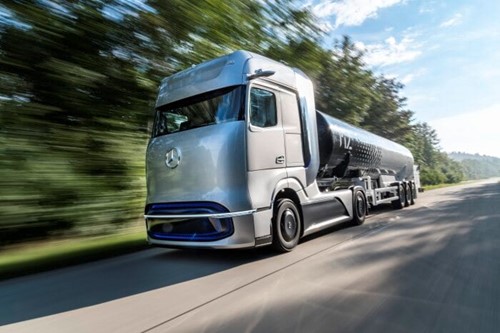News
Linde, Daimler collaborate on liquid H2 refueling technology
Linde and Daimler Truck AG signed an agreement in early December 2020 to jointly develop the next generation of liquid hydrogen refueling technology for fuel-cell-powered trucks. With their collaboration, the partners aim to make the refueling process with hydrogen as easy and practical as possible.
Together, the companies will focus on a new process for handling liquid hydrogen ("subcooled" liquid hydrogen, or "sLH2 technology"). This innovative approach allows for higher storage density, greater range, faster refueling and superior energy efficiency. The new process will use higher-than-ambient pressure levels and special temperature control, which avoids boil-off effects and "return gas" (gas from the vehicle's tank returning to the filling station) during refueling and will not require complex data communication between the filling station and the truck during refueling.
Overall, the technology allows simpler filling station concepts. The improved energy storage density is due to the higher-than-ambient pressure level, which increases the hydrogen mass in the tank.

The companies plan for the first refueling of a prototype vehicle at a pilot station in Germany in 2023. Linde and Daimler Truck AG are planning for a high level of transparency and openness around the relevant interfaces of the jointly developed technologies. By enabling as many other companies as possible to develop their own refueling and vehicle technologies that apply the new liquid hydrogen standard, a global mass market is to be established for the new process.
Implementation of new fueling process. In September 2020, Daimler Truck AG celebrated the world premiere of the fuel cell concept truck Mercedes-Benz GenH2 Truck. The technology enables long-distance haulage operations with ranges of up to 1,000-plus km on a single tank of hydrogen. Daimler Truck AG plans to begin customer trials of the GenH2 Truck in 2023; series production is scheduled to start in the second half of the decade. Due to the use of liquid instead of gaseous hydrogen with its higher energy density, the vehicle's series version performance is planned to equal that of a comparable conventional diesel truck.
Daimler Truck AG prefers to use liquid hydrogen because in this state, the energy carrier has a far higher energy density in relation to volume than gaseous hydrogen. As a result, the tanks of a fuel cell truck using liquid hydrogen are much smaller and, due to the lower pressure, significantly lighter. This gives the trucks more cargo space and a higher payload. At the same time, more hydrogen can be carried, which significantly increases the trucks' range.
Daimler Truck AG is moving forward with the development of the necessary tank system technologies to make liquid hydrogen usable also in mobile applications as an energy source for series-produced fuel cell trucks. The storage of cryogenic liquid hydrogen at –253°C is already common practice in stationary applications—e.g., at hydrogen filling stations or in the transport of liquid hydrogen as cargo.

